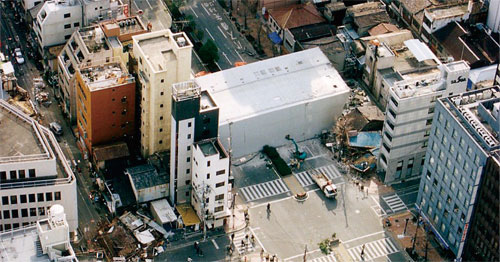Nagoya City has over 50 public buildings at risk of collapse or damage in strong earthquake

On July 4, Nagoya City released details on 50 city-owned buildings across the city that face a high risk of collapse in an earthquake producing a seismic intensity (shindo) level of 6+ or above. All 50 buildings were built before the 1981 change in earthquake-resistant construction methods. 45 of those buildings are public housing complexes which are home to as many as 2,500 households.Read more
80~90% of condominiums in Kumamoto suffered damage in April earthquakes

90% of the condominiums in Kumamoto Prefecture that are members of the Condominium Management Companies Association reported building damage from the April earthquakes. Meanwhile the Kumamoto Prefecture Condominium Management Federation estimated that 80% of the 850 condominiums in Kumamoto City suffered earthquake damage.Read more
Consider earthquake resistance when buying real estate in Japan

Nowadays Japan has some of the most rigid earthquake codes, however that wasn’t always the case and older buildings may be more susceptible to earthquake damage than some buyers realise.
Picking a location
Choose a property on solid ground.
Properties on reclaimed land, flood plains, former lakes, ponds, riverbanks, rice fields, or marshes are more susceptible to collapse and tilting from liquefaction. Even newer homes may not be protected from the danger of being built on soft soil.
Building age
Choose a property built after June 1981.Read more
Google launches disaster prevention map for Tokyo

Google’s Crisis Response Team have released a disaster prevention map for Tokyo. The map shows the various risk levels for building collapse, fire and evacuation hazards, as well as the location of evacuation zones, public pay phones and tsunami evacuation buildings.
Zones are based on data supplied by the Tokyo Metropolitan Government. The local government has provided this data online for several years, but the link up with Google Maps has provided a much easier user interface.Read more
Can the Olympics facilities withstand an earthquake?

A recent estimate by a government panel in late 2013 reported that a magnitude-7 earthquake directly under Tokyo could destroy as many as 610,000 buildings in Tokyo and the neighbouring three prefectures. 70% of the affected buildings could be destroyed by fires that quickly spread through densely packed neighbourhoods.
Many of the Olympic events are centred around the islands in Tokyo Bay. While they may be spared from the risk of fire due to the open space, these man-made islands can suffer damage from liquefaction and are even at risk of being submerged by a tsunami. A working group from the Cabinet Office's Disaster Management Group are requesting that urgent measures be taken to reduce the risk of any damage and to make sure that the Olympics can be held without disruption.Read more
The latest revision to earthquake-retrofitting laws and what it means for old apartments

The revision to the law to promote earthquake-resistant repairs to buildings went into effect on November 25. This revision obligates the owners of large-scale buildings such as hotels and other institutions to undertake earthquake-resistant building inspections, of which the results will be made public. It also applies to buildings alongside designated major roads. In the event of a major earthquake, there is a risk that older, unsafe buildings could topple onto roads and block access for emergency service vehicles.
So what does this mean for apartments in ageing buildings?Read more
Earthquake insurance premiums to rise 15.5%
 Earthquake insurance premiums on households are expected to rise by an average of 15.5% from July 2014. The reason for the increase is due to the growing risk of another major earthquake. Also, the insurance industry saw a surge in payouts following the Tohoku earthquake which has drained the reserve fund.
Earthquake insurance premiums on households are expected to rise by an average of 15.5% from July 2014. The reason for the increase is due to the growing risk of another major earthquake. Also, the insurance industry saw a surge in payouts following the Tohoku earthquake which has drained the reserve fund.
The average annual premium on a concrete or steel-framed residence with 10 million Yen coverage in Tokyo would increase from 16,900 Yen to 20,200 Yen. In disaster-hit areas in Iwate and Fukushima Prefectures, premiums may rise by as much as 30%. Meanwhile, some areas such as Yamagata Prefecture may see premiums fall.Read more
